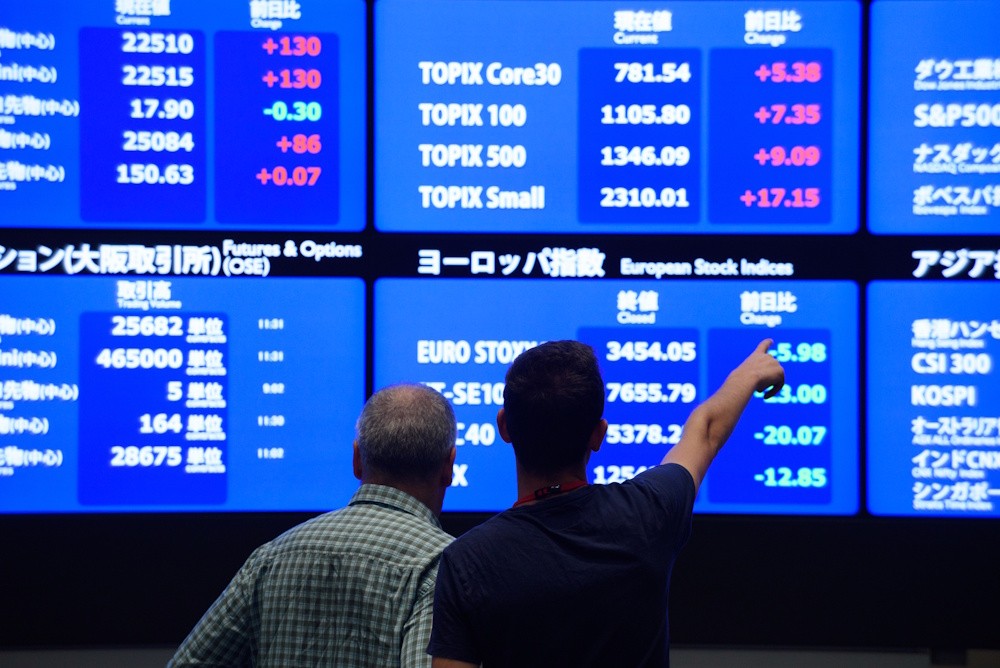
Japan’s benchmark Nikkei 225 index experienced an increase of 0.99%, concluding the trading day at 45,493.66. Indian tech stocks experienced a decline of nearly 3% on Monday following the announcement made by U.S. President Donald Trump late Friday regarding a $100,000 visa fee for new H-1B visas, designated for high-skilled foreign workers. In 2024, approximately 400,000 H-1B visas were issued, with 71% allocated to Indian nationals. Nine of the ten Indian IT companies on the Nifty IT sub-index experienced declines, with Mphasis leading the losses at over 4%, followed by Persistent Systems at a decrease of 3.8%, and LTIMindtree, which saw a reduction of 3.79%.
According to Manishi Raychaudhuri, the newly introduced fees may incentivize Indian companies to increase the offshoring of their employees based in the United States. This would result in a decrease in the headline revenue generated by these IT majors, as offshoring represents a high-margin yet low-revenue activity, he added. He estimated that the net impact in the immediate term “to be between 2% to 4% as far as the earnings of these companies are concerned, which is getting reflected in the way these stocks are trading today.” India’s benchmark Nifty 50 experienced a decline of 0.12%, whereas the Sensex index recorded a decrease of 0.48%. Adani Power’s shares surged by more than 15% following the implementation of its five-for-one stock split on Monday. The Indian thermal power company announced that its shareholders have sanctioned the division of one share, with a nominal value of 10 Indian rupees, into five shares valued at two rupees each, as per a filing made earlier this month.
Firms often engage in stock splits to enhance accessibility for investors, thereby improving the company’s liquidity. In China, the CSI 300 experienced an increase of 0.46% following the central bank’s decision to maintain the loan prime rates unchanged for the fourth consecutive month. The decision to maintain the current stance follows the recent action by the U.S. Federal Reserve, which reduced its rates by 25 basis points last week. The People’s Bank of China maintained the one-year LPR at 3.0%, while the five-year LPR was held steady at 3.5%, as stated in a release on Monday. The one-year Loan Prime Rate predominantly affects the majority of new and existing loans, whereas the five-year rate plays a crucial role in determining mortgage pricing. The Hang Seng Index in Hong Kong experienced a decline of 0.76%, concluding at 26,344.14, whereas the Hang Seng Tech Index saw a decrease of 0.58%, finishing at 6,257.91. Meanwhile, the Topix index saw a rise of 0.49%, finishing the session at 3,163.17. The 10-year Japanese Government Bonds increased by 0.67% to 1.650, marking the highest level since July 2007. South Korea’s Kospi index increased by 0.68%, concluding at 3,468.65, whereas the small-cap Kosdaq surged by 1.3%, finishing at 874.36.
Samsung Electronics experienced a surge of more than 4% following local media reports indicating that Nvidia had granted approval for the South Korean chipmaker’s fifth-generation high-bandwidth-memory product. The approval is said to have followed numerous unsuccessful efforts over a period of nearly 18 months to satisfy Nvidia’s stringent performance criteria. Australia’s ASX/S&P 200 experienced an uptick of 0.43%, concluding the session at 8,810.9. U.S. equity futures exhibited minimal movement during Asian trading hours, following a robust week for the major averages. The Dow Jones Industrial Average and S&P 500 reached new all-time highs as the implications of the Fed’s rate cut resonated with investors.
Markets are currently anticipating two additional quarter-point reductions before the year’s conclusion. On Friday in the United States, the Dow Jones Industrial Average increased by 172.85 points, representing a rise of 0.37%, to finish at 46,315.27, achieving a new record high. The S&P 500 concluded the day with a gain of 0.49%, closing at 6,664.36, whereas the Nasdaq Composite experienced an increase of 0.72%, ending at 22,631.48.
